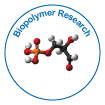Production and Recycling of Organic Matter in Marine Biofilms Formed on Old and New Plastics
Received Date: Dec 01, 2022 / Published Date: Dec 26, 2022
Abstract
New plastics, such as surgical masks, nitrile gloves, and compostable plastics, have been produced in response to the recent pandemic and in accordance with international regulations. These new plastics, along with other common plastics, have significantly increased their input into the marine environment. Biofilm accretion was studied in the laboratory because floating plastic provides a suitable surface for the settlement of microorganisms. Under natural and artificial conditions, some of which resembled anthropogenic-affected states (eutrophication) and others of environmental variability (darkness and oligotrophy), the biofilm’s organic matter production and recycling characteristics were evaluated. Due to their structure and composition, the various plastics hosted distinct biofilms in natural conditions. On compostable plastic and surgical mask, biofilm was found to be thicker, with organic carbon maxima of 4.3 0.8 g cm2 and 35.0 4.7 g cm2, respectively. Compared to polyethylene terephthalate, polystyrene, and nitrile, compostable plastic contained more carbohydrates (on average, 8.0 0.8 g cm2) than the other materials.
Keywords: Biofilm; Plastics; Recycle
Citation: Collins S (2022) Production and Recycling of Organic Matter in Marine Biofilms Formed on Old and New Plastics. Biopolymers Res 6: 131. Doi: 10.4172/bsh.1000131
Copyright: © 2022 Collins S. This is an open-access article distributed under the terms of the Creative Commons Attribution License, which permits unrestricted use, distribution, and reproduction in any medium, provided the original author and source are credited.
Share This Article
Recommended Journals
Open Access Journals
Article Tools
Article Usage
- Total views: 840
- [From(publication date): 0-2022 - Apr 04, 2025]
- Breakdown by view type
- HTML page views: 524
- PDF downloads: 316
